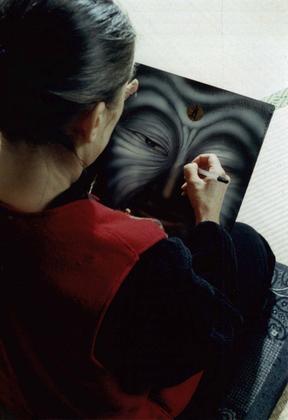
|
Buddhism and Buddhist art are interrelated. Buddhist art, which from ancient times was a visual form of Buddhist teaching, is symbolized by the Buddha, an entity free of restrictions. The Mandala of 13 Buddhas actualy shows 13 aspects of the One Buddha, which is Emptiness. These Buddhas are: Fudo Myoo, Shaka Nyorai, Monju Bosatsu, Fugen Bosatsu, Jizo Bosatsu, Miroku Bosatsu, Yakushi Nyorai, Kanzeon Bosatsu, Seishi Bosatsu, Amida Nyorai, Ashuku Nyorai, Dainichi Nyorai i Kokuzo Bosatsu. Each particular Buddha has his own dharani, a short mystical verse, often regarded as the quintessence of a sutra. These were written in Siddham script (bonji), a form of ancient Sanskrit used for sacred writing, which was transmitted to Japan from India via China in the 8th century by esoteric traditions of Tendai and Shingon Buddhism. In Japan the study and practice of Siddham reached its zenith and influenced many other traditions.
Ewa Hadydon |